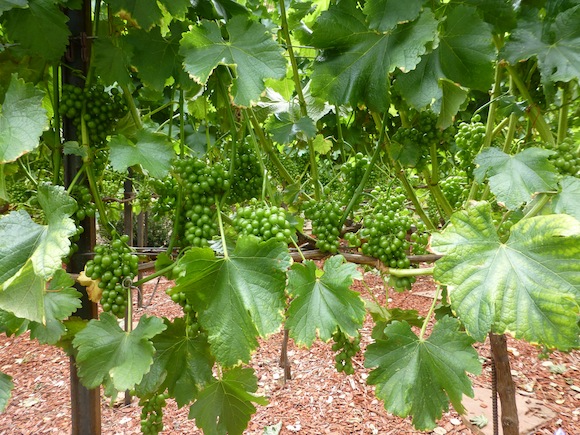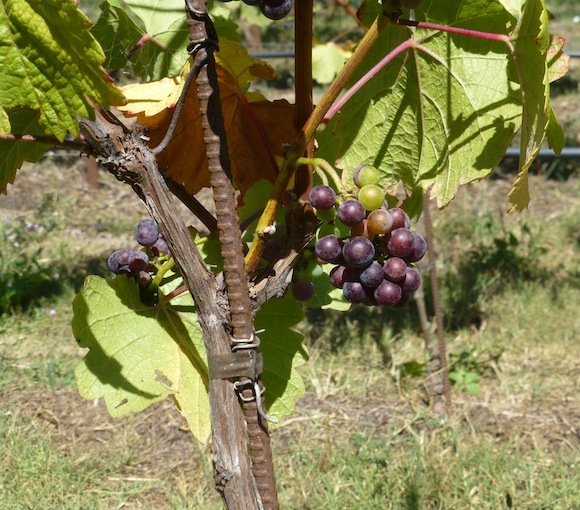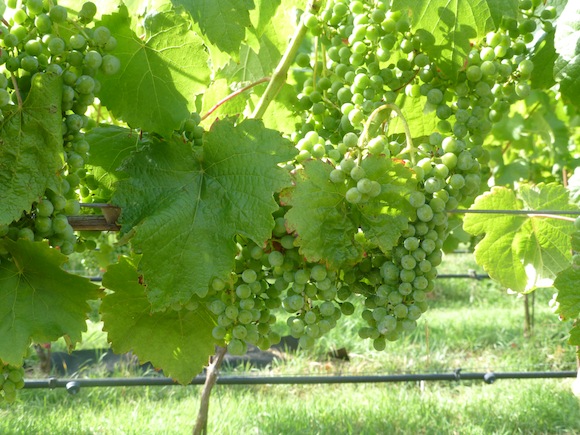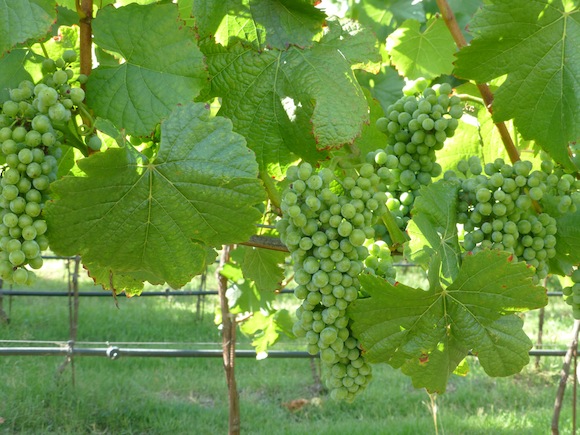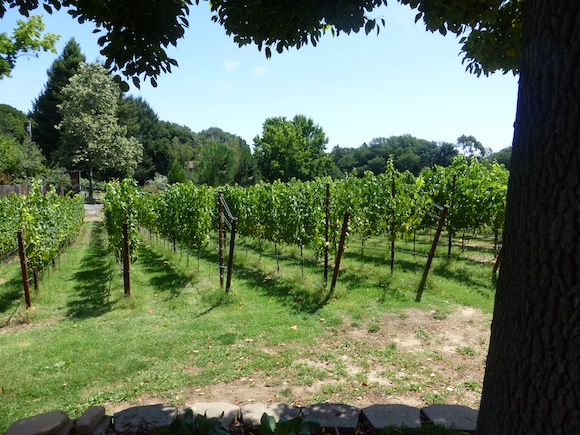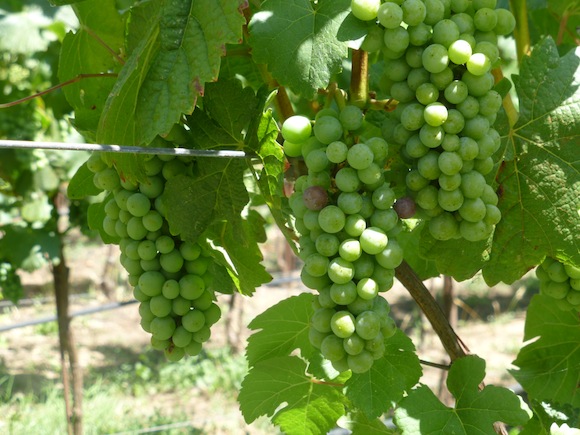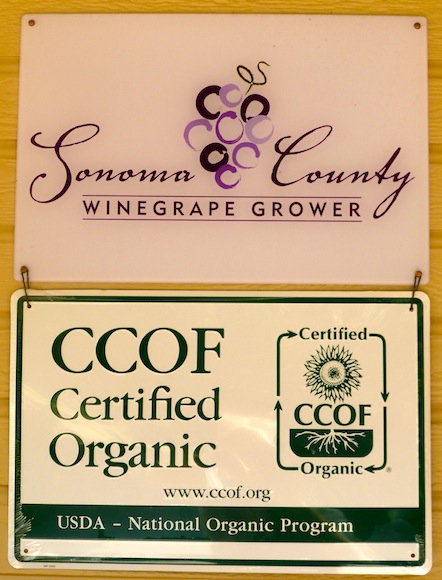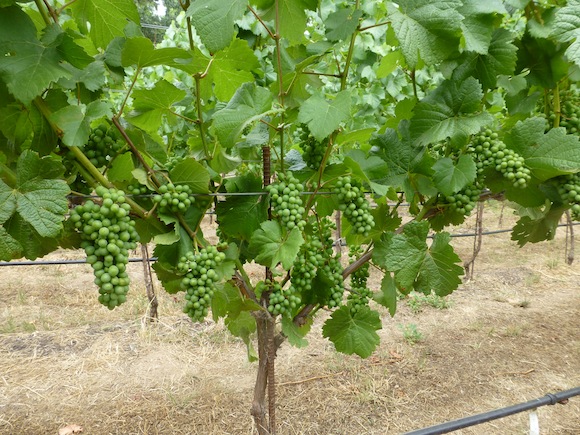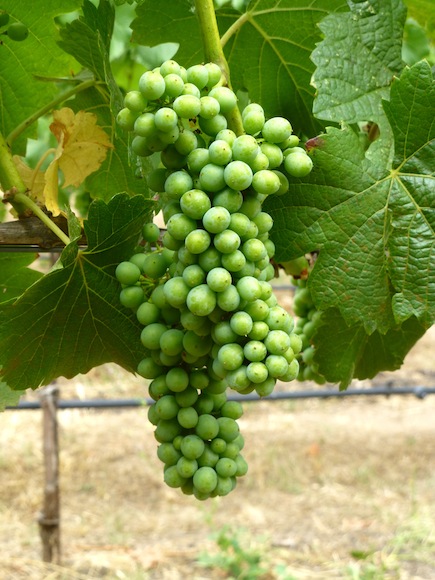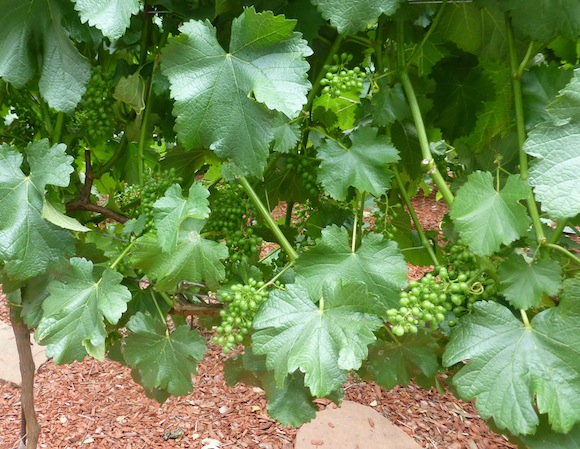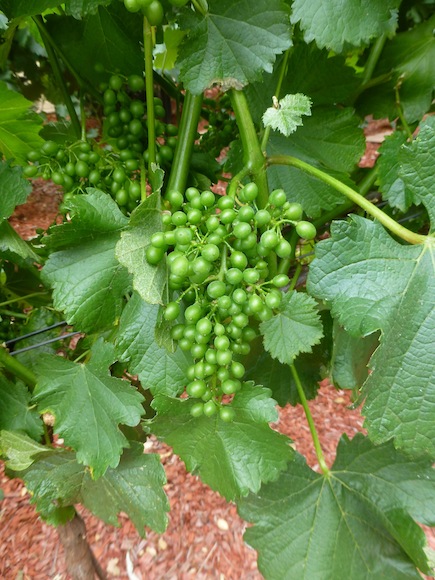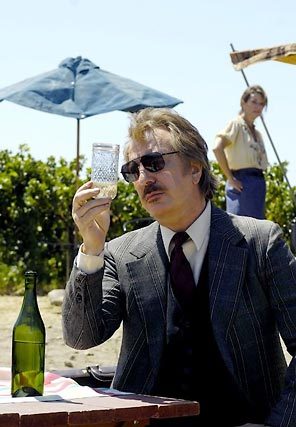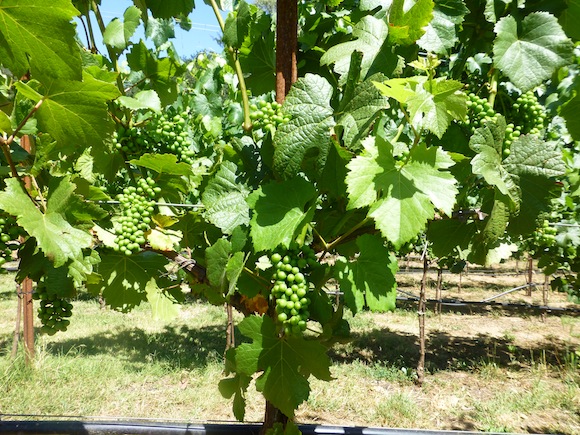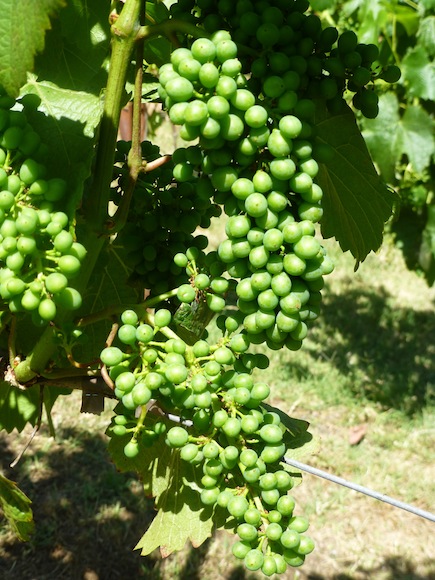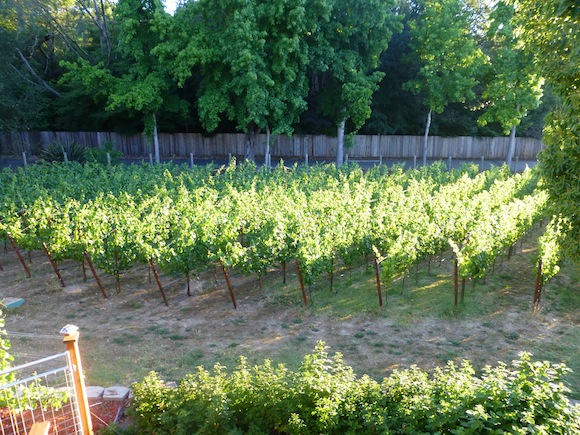What you see is our 2013 Sauvignon Blanc just after we have leafed it on Aug 2, 2013. I hope you can tell from the picture that we can see through all 4 of the rows. In order to remove some of the grassiness you need to remove most of the leaves. Should be a great crop this year!
But the real news…I took our 2012 Pinot Noir in for analysis to see what the alcohol content was and if I’m sulfuring correctly.
13% alcohol – 0.565 conversion from our 23% sugar content at harvest, about typical.
pH 3.88 – Very high, so just need a little extra sulfur
VA(volatile acidity) 0.65% – the lower the better, but below 0.7 is OK. You can taste the bad stuff above 0.6%
Molecular sulfur 0.42 mg/l – this should be 0.5 mg/l, so I have to add some this next week. This is what keeps the wine from spoiling.
Free sulfur 50 mg/l – this should be 60-70 mg/l to reach 0.5 mg/l molecular sulfur.
TA(titratable acidity) 5.5 g/l – perfect…this is acid content and between 5-7 is great.
All in all, I’m happy with the results and it tastes very good. In fact, I’ll probably serve it at my nephew’s wedding in a month straight out of the barrel!
